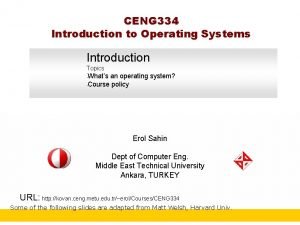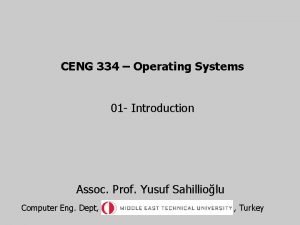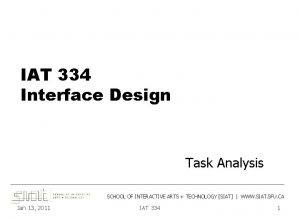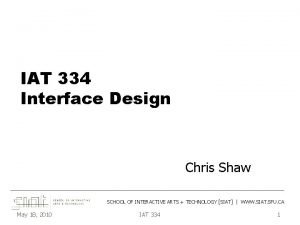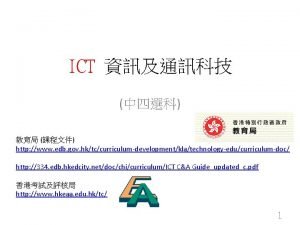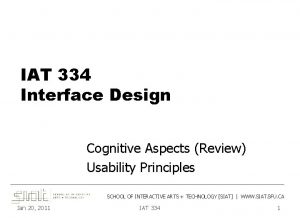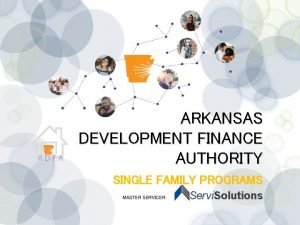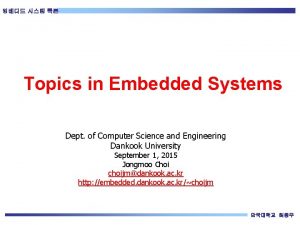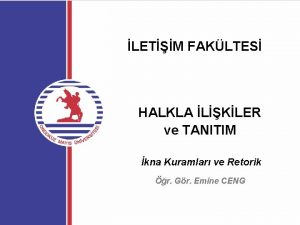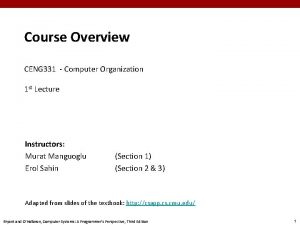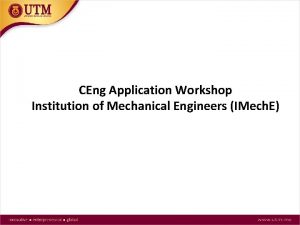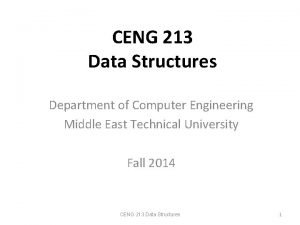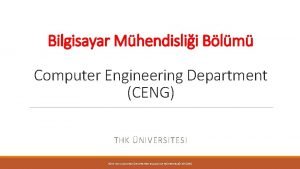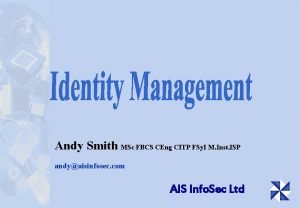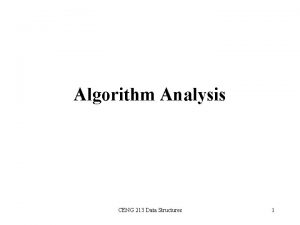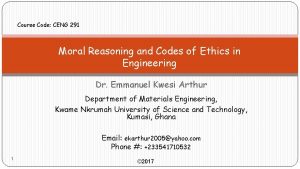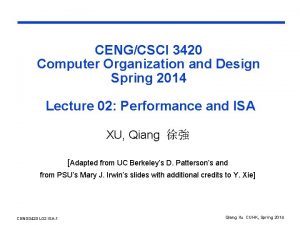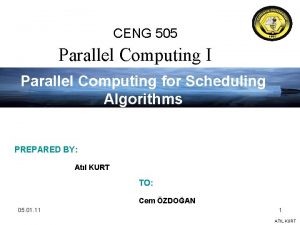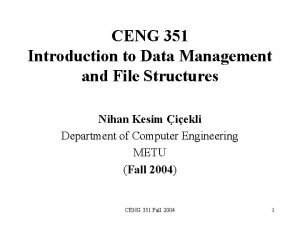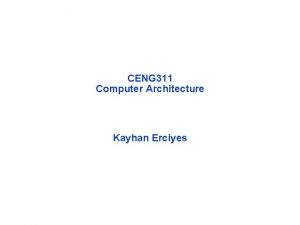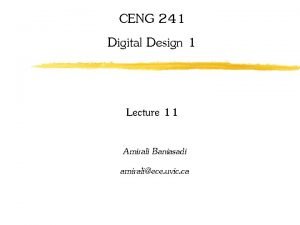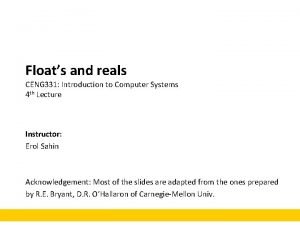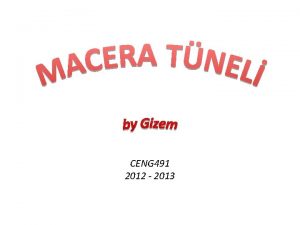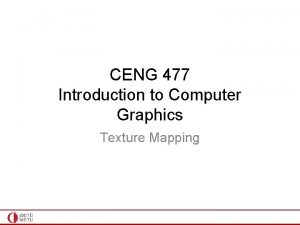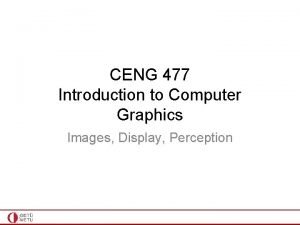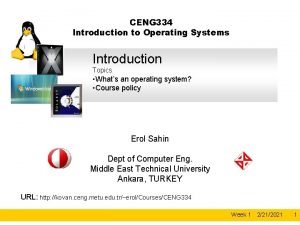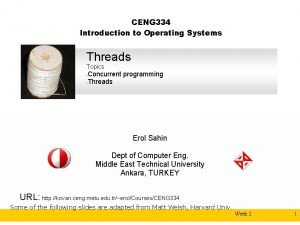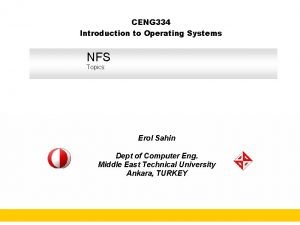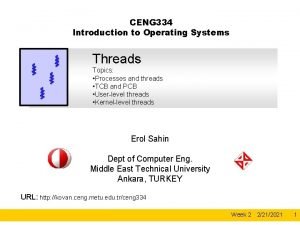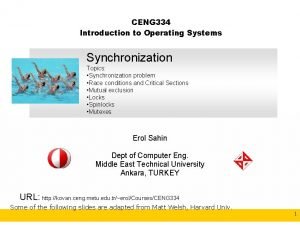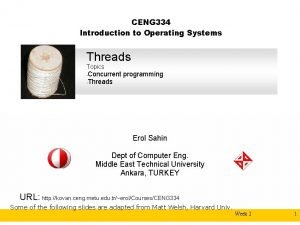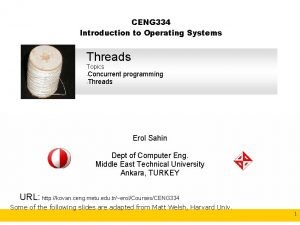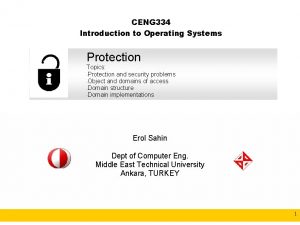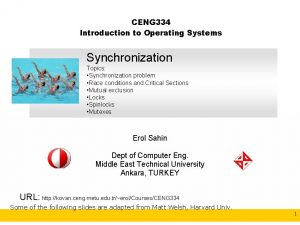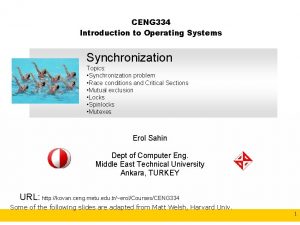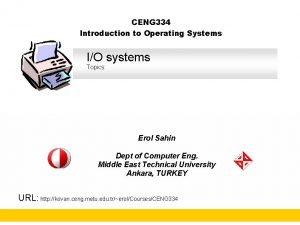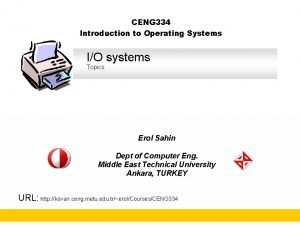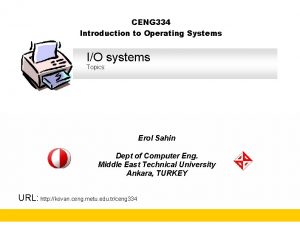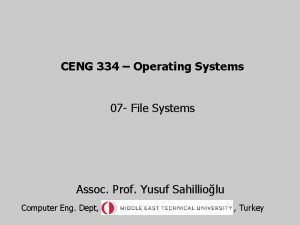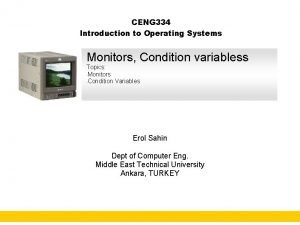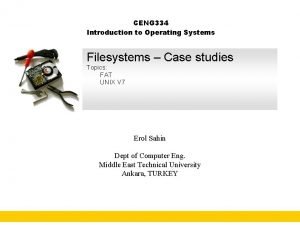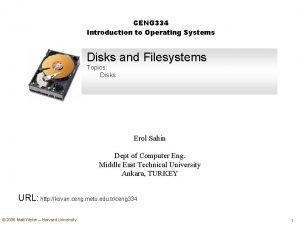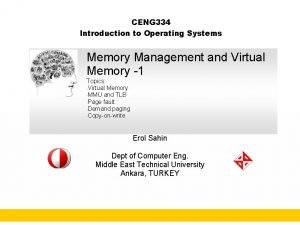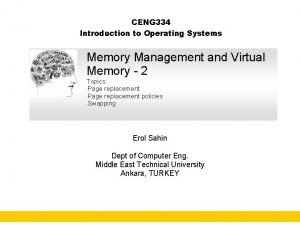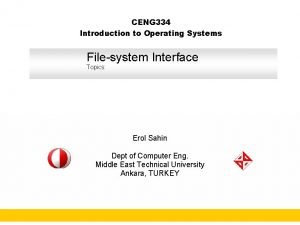CENG 334 Introduction to Operating Systems Introduction Topics



























- Slides: 27

CENG 334 Introduction to Operating Systems Introduction Topics What’s an operating system? • Course policy • Erol Sahin Dept of Computer Eng. Middle East Technical University Ankara, TURKEY URL: http: //kovan. ceng. metu. edu. tr/~erol/Courses/CENG 334 Some of the following slides are adapted from Matt Welsh, Harvard Univ.

Let’s get started! https: //www. youtube. com/watch? v=v. KQi 3 b. BA 1 y 8 2

R u ready? Unfortunately no one can be told what the matrix is. You have to see it yourself! 3

House for Rent: Yuzuncu Yil Linux Emlak’tan • Rent: 900 TL • Depozito: 900 TL • Aidat: 20 TL l 4

5

Welcome to CENG 334! What is this course about? Operating Systems drive the inner workings of virtually every computer in the world today PCs, servers, i. Pods, cell phones, missile guidance systems, etc. all have an OS that dictate how they operate. The OS manages many aspects of how programs run, and how they interact with hardware and the outside world. Understanding the OS is essential for understanding: System performance and reliability Resource management Virtualization and abstraction Concurrency and parallelism Hardware interfaces and I/O This course is about more than just “kernel internals” It is really about learning complex systems design. 6

What’s an Operating System? ü ü A program that acts as an intermediary between a user of a computer(ized device) and the computer(ized device) hardware. Objectives ü ü Abstraction – ü Every application thinks it has its own CPU ü Every application thinks it has access to its memory space ü Every application thinks it has clean/simple interface to hardware devices Arbitration – Manages access to shared resources. ü Which application should be granted CPU now? ü Which application should be allocated memory? ü Which application should be granted for hardware access? 7

What is an operating system? Software that provides an elaborate illusion to applications User application Protection boundary Kernel Memory management Process management Accounting Device drivers Filesystem TCP/IP stack Disk I/O CPU support Hardware/software interface Gnarly world of hardware 8

One OS Function: Concurrency Give every application the illusion of having its own CPU! I think I have my own CPU So do I! 9

One OS Function: Concurrency The OS timeslices each application on a single CPU Switches between applications extremely rapidly, i. e. , 100 times/sec Kernel Scheduler Timeslice on single CPU system time 10

Another OS Function: Virtual Memory Give every application the illusion of having infinite memory And, that it can access any memory address it likes! In reality, RAM is split across multiple applications Code Data Physical RAM Stack VM System Code Data Stack Swap out to disk 11

More OS Functions Multiprocessor support Modern systems have multiple CPUs Can run multiple applications (or threads within applications) in parallel OS must ensure that memory and cache contents are consistent across CPUs Filesystems Network protocols Real disks have a hairy, sector-based access model User applications see flat files arranged in a hierarchical namespace Network interface hardware operates on the level of unreliable packets User apps see a (potentially reliable) byte-stream socket Security and protection Prevent multiple apps from interfering with each other and with normal system operation 12

Why bother with an OS? Not just to give Slashdot readers something to argue about. . . What do you think? 13

Why bother with an OS? Not just to give Slashdot readers something to argue about. . . Abstract away messy details of hardware Safety! Give apps a nice clean view of the system Save programmers a lot of trouble when building applications Allow apps to be ported across a wide range of hardware platforms Don't let applications run amok – keep them in a “sandbox” e. g. , Access to unallocated memory address crashes only the program, not the whole system Segmentation fault – core dumped Efficiency Share one machine across many different apps: concurrent execution You would be surprised how much slack there is in a typical computer system 14

Why study operating systems? Most people will never write one from scratch. . . (Though if you do you stand to get incredibly rich) Although more and more people are hacking them (e. g. , Linux and BSD) You need to understand the “big picture” in order to hack the details This class is about much more than the kernel! Data structures, concurrency, performance, resource management, synchronization, networks, distributed systems, databases. . . The ideas and skills you pick up in this class have broad applications And it doesn't hurt for those Microsoft interviews either This course is the basis for future work in other areas of systems Distributed systems, P 2 P, sensor nets, etc. 15

Major OS Design Issues Structure Sharing How to prevent malicious users from compromising the system? Performance How to programs and users name and access resources? Security How are limited resources multiplexed across users? Naming How is the OS itself organized? Lots of modules? One big blob of code? How to keep it all fast? Reliability What happens when a program (or the OS itself) has a bug or failure? 16

More OS Design Issues Extensibility Communication What happens when demands on resources increase? Distribution How are multiple concurrent activities created and controlled? Scale How do programs exchange information? Concurrency How do users and developers add new features? How do many computers interact with each other, e. g. , to pool resources? Accounting How do you track (and maybe charge for) resource usage? 17

Teaching staff – Instructors: • Section 1: Dr. Yusuf Sahillioglu • Section 2: Dr. Erol Sahin • Section 3: Dr. Onur Tolga Sehitoglu Location: B-111, Tel: 210 5539, E-mail: erol@ceng Office hours: by appointment. – Section 2 lectures: – Tuesdays: 10: 40 -12: 30 @ BMB 4 – Thursdays: 11: 40 -12: 30 @ BMB 4 – Teaching assistant: Ozan Yildiz E-mail: oyildiz@ceng Mehmet Celik E-mail: mcelik@ceng Cagri Utku Apak E-mail: cakpak@ceng 18

Textbook Operating System Concepts Avi Silberschatz Peter Baer Galvin Greg Gagne John Wiley & Sons, Inc. ISBN 0 -471 -76907 -X Modern Operating Systems Andrew S. Tanenbaum Prentice Hall. , 2001, ISBN-10: 0130313580 ISBN-13: 97801303135 19

Grading 23%: Midterm II 24%: Final Exam. 30%: Assignments. 20

Assignments - To be decided Assignment 1: Pipes? Assignment 2: Basic Threading? Assignment 3: File System? 21

Policies • Late assignments: – Late submission policy will be announced for each assignment. • Academic dishonesty: – All assignments submitted should be fully your own. We have a zero tolerance policy on cheating and plagiarism. Your work will be regularly checked for such misconduct and any such attempts will be prosecuted: • At all times you have the right to challenge our decisions on cheating, upon which the case will be processed through the disciplinary channels of the university. However, we would like to remind you that, if found guilty, the legal code of the university proposes a minimum of six month expulsion from the university. 22

Cheating • What is cheating? – Sharing code: either by copying, retyping, looking at, or supplying a copy of a file. • What is NOT cheating? – Helping others use systems or tools. – Helping others with high-level design issues. – Helping others debug their code. 23

Cheating: Caught and punished • Friend • Whole code • • Piece of cake for us. . Partial code/ “close collaboration” • Walk on a thin line • Friend who submitted a similar homework in the previous years • Caught, since all previous homework submissions are archived • Internet • Whole code • Partial code 24

Communication • • Slides about the course will be available on the CENG 334 web page: http: //kovan. ceng. metu. edu. tr/~erol/Courses/CENG 334/ Announcements about the course will be made at the CENG 334 newsgroup at news: //metu. ceng. course. 334 Please put Section 2 on the subject line of your posting. If you have a specific question you can send an e-mail to the us. However make sure that the subject line starts with CENG 334 [capital letters, and no spaces] to get reply. 25

Web surfing homework for next lecture. . Learn • More about XEROX PARC • • More about Ken Thomson and Dennis Ritchie • • What are they known for More about Microsoft • • What have they invented How did MS-DOS become so successful? More about Apple • What’s the relation between XEROX PARC GUI and Apple GUI? • What’s Slashdot? • Use Wikipedia, and google the web. . 26

Movie suggestion 27
 Ceng334
Ceng334 Ceng 334
Ceng 334 Iat 334
Iat 334 Iat 334
Iat 334 Ablmcc scy
Ablmcc scy Love story 334
Love story 334 Iat 102
Iat 102 334-244-4350
334-244-4350 What is dual mode in os
What is dual mode in os Embedded systems topics for presentation
Embedded systems topics for presentation Emine ceng
Emine ceng International professional engineer
International professional engineer Ceng 331
Ceng 331 Imeche ceng application example pdf
Imeche ceng application example pdf Cow ceng metu
Cow ceng metu Ceng thkü
Ceng thkü Citp vs ceng
Citp vs ceng Ceng 213
Ceng 213 What is the difference between ethics and law
What is the difference between ethics and law Ceng 3420
Ceng 3420 Ceng 505
Ceng 505 Ceng 351
Ceng 351 Iyte ceng
Iyte ceng Ceng 241
Ceng 241 Ceng 240 metu
Ceng 240 metu Bahri tokmak
Bahri tokmak Vray roadmap
Vray roadmap Ceng 477
Ceng 477
